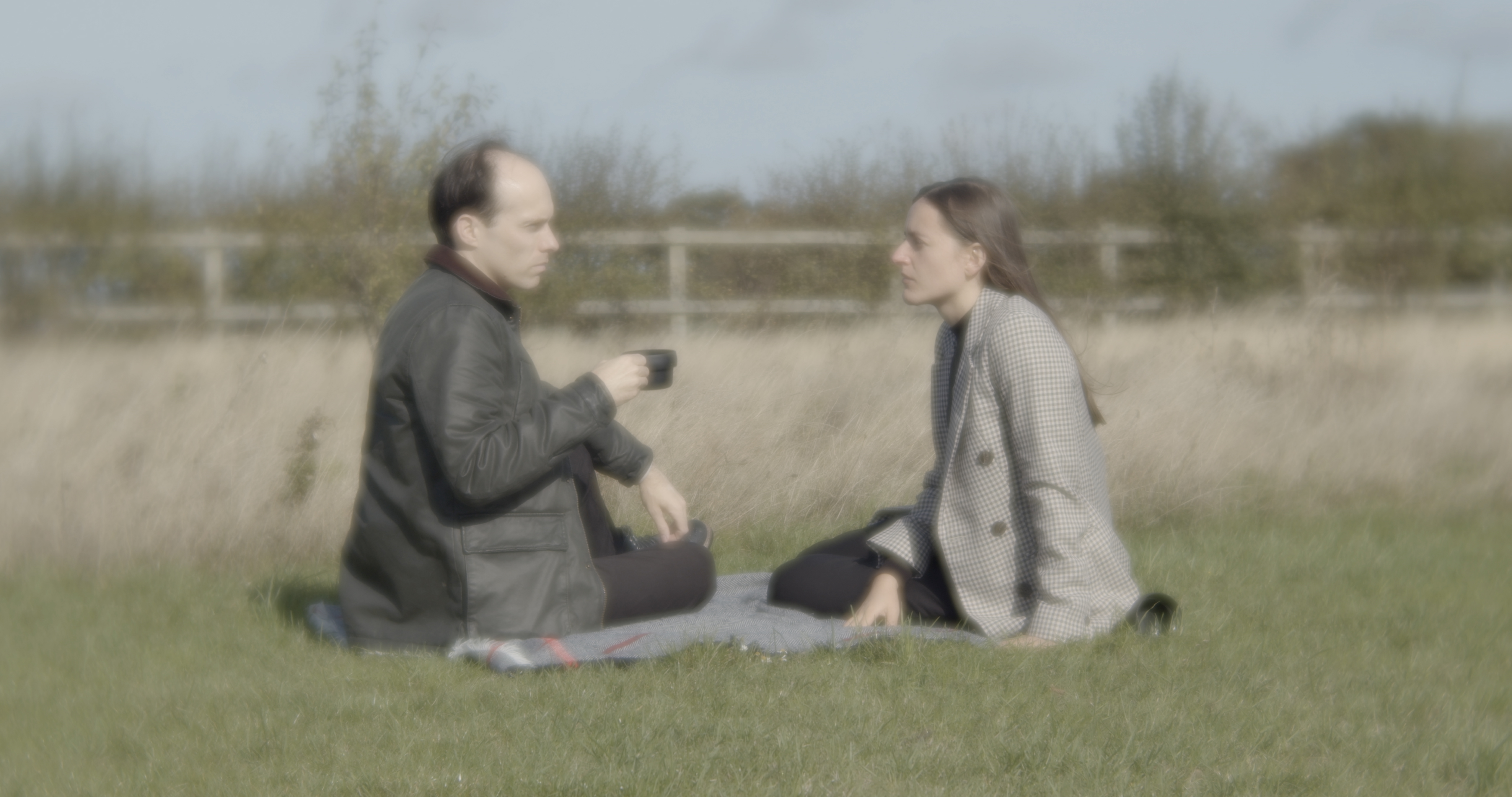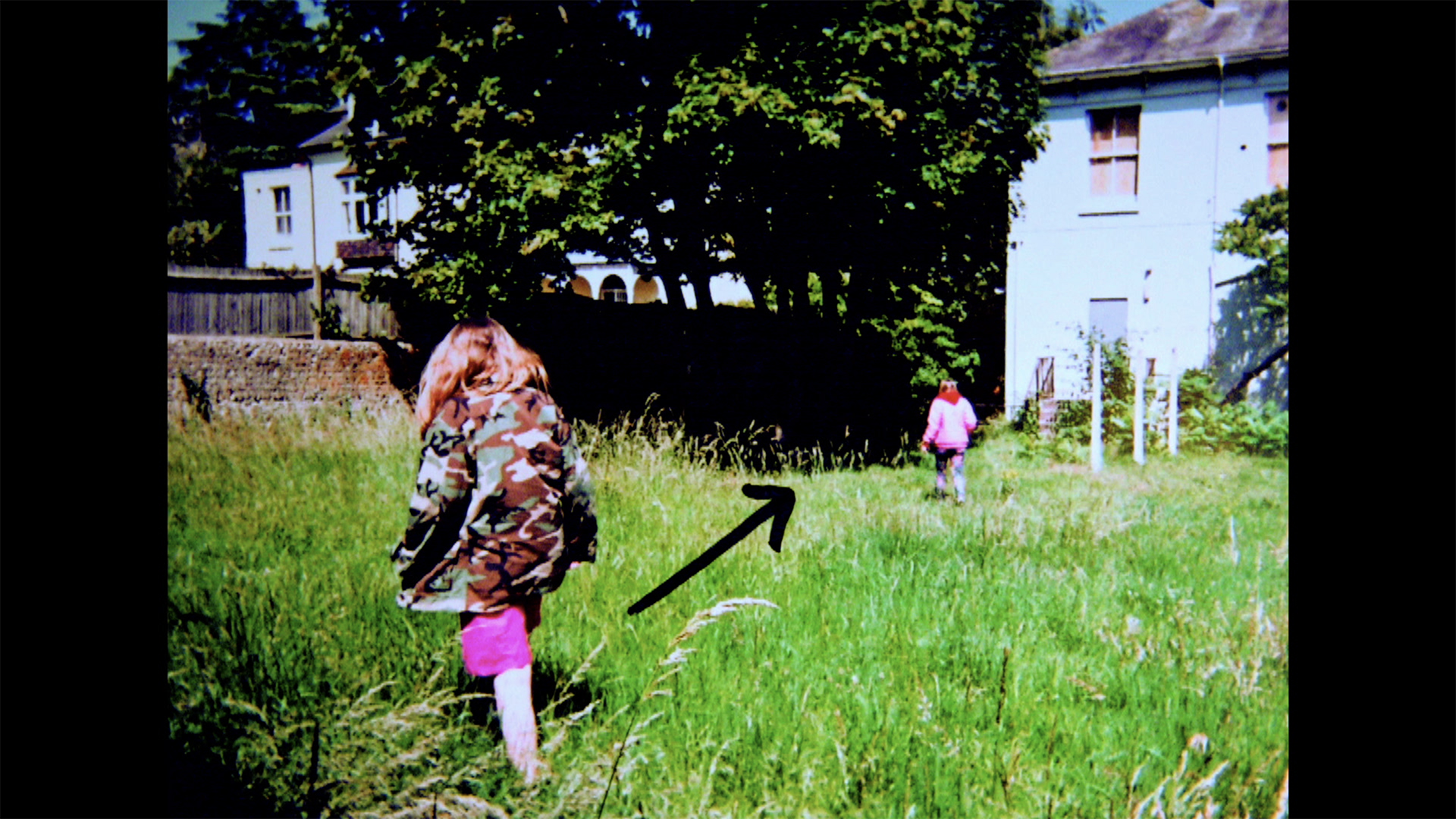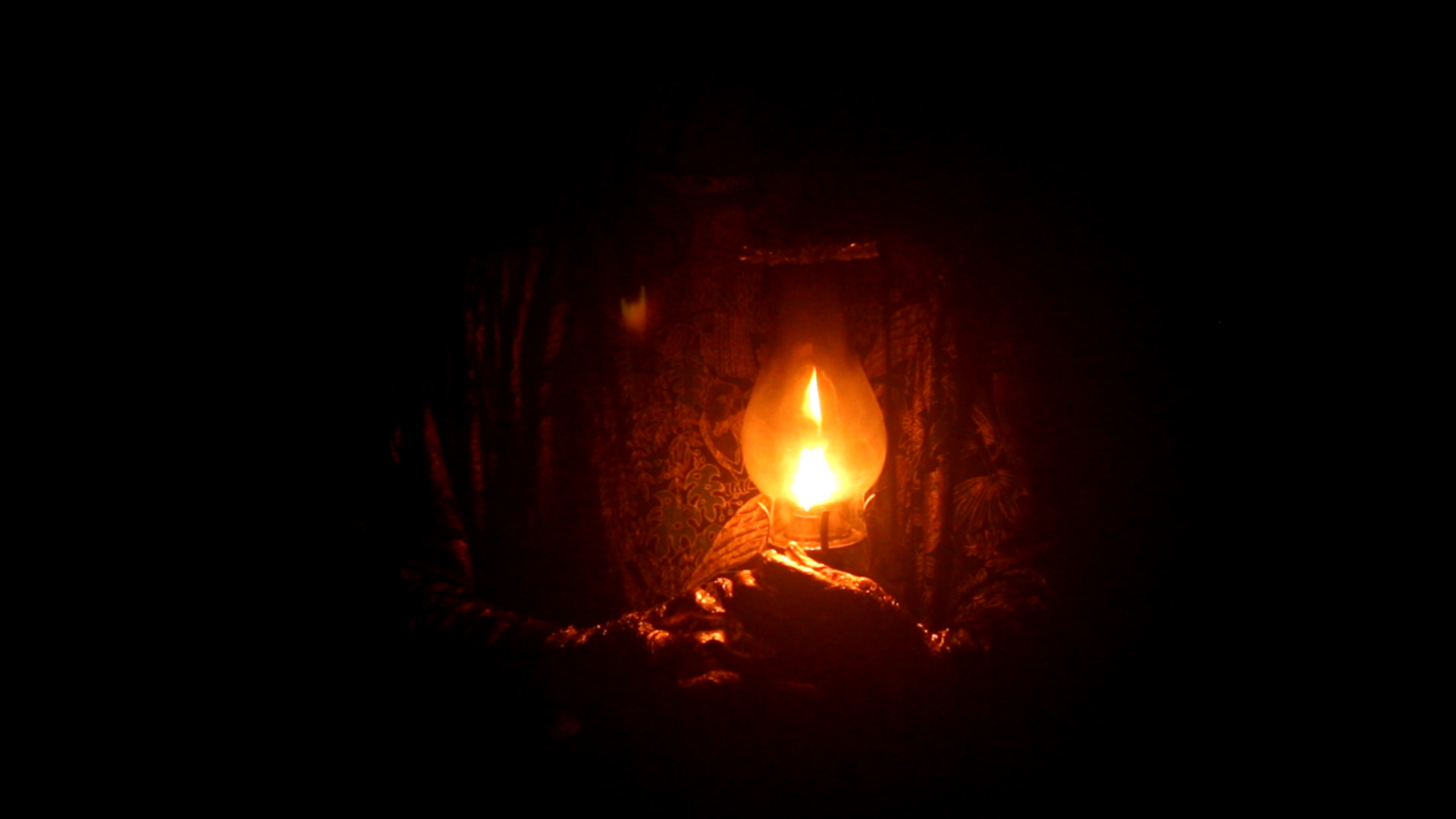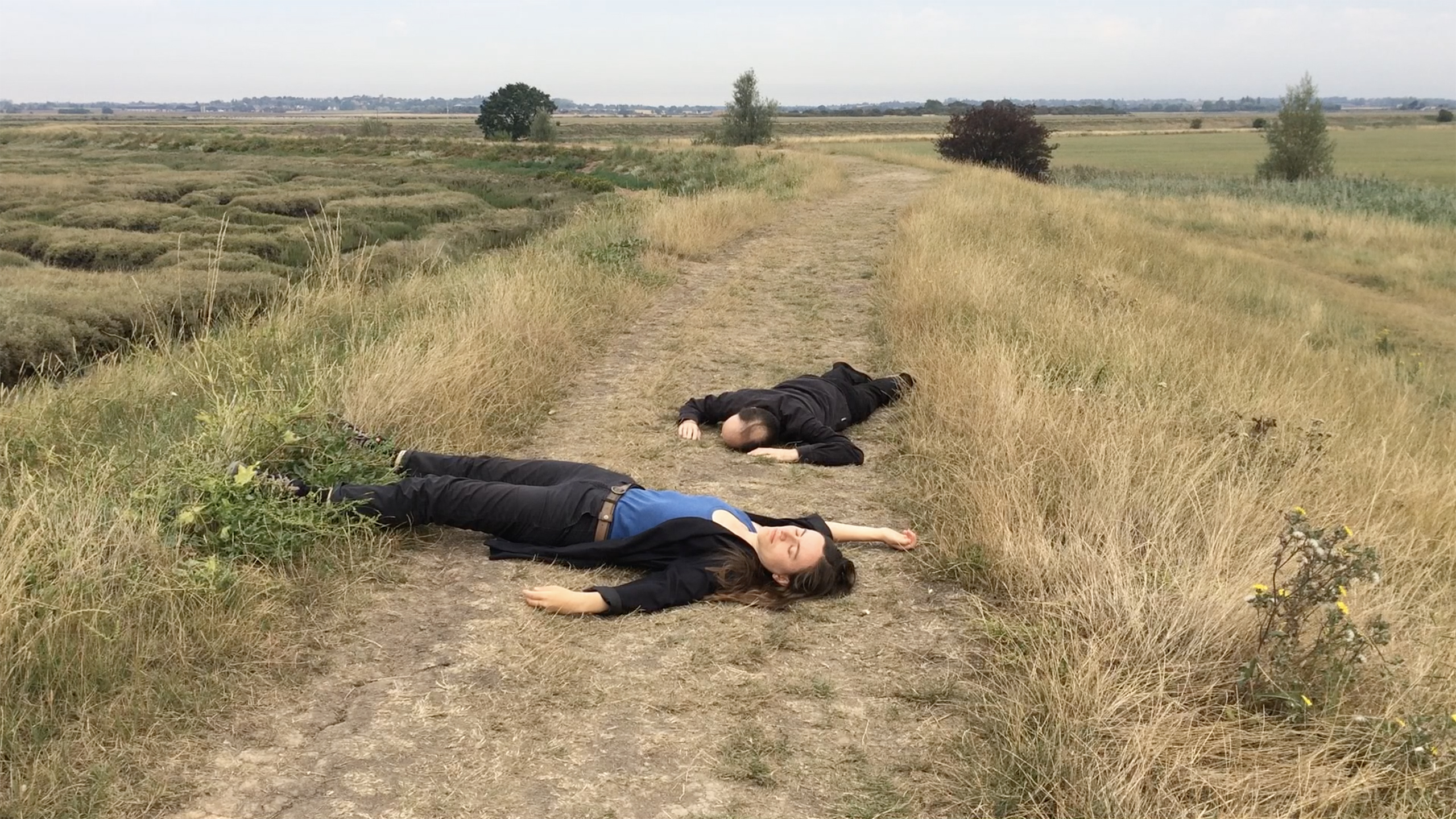
OF LIGHT AND DARKNESS – THE MOTION PICTURE EXPLORATIONS OF DANIEL & CLARA
By Nikola GocićDaniel & Clara met in November of 2010, and their encounter must have been preordained by some unknown, mystical, cosmic or even über-cosmic forces, which – as strange as it may sound – is the only way to explain their idiosyncratic unison. It was only a few weeks after Moirai brought them together that their collaboration began to flourish – the spells for what will become their feature film debut were cast. The following article is an attempt at familiarizing the readers with the key offerings of their decade-old alliance.
Finished and released in 2012, Savage Witches is the first milestone in Daniel & Clara’s fruitful career. Part love letter to their Czech New Wave favourite – Věra Chytilová’s surrealist, proto-punk dramedy Daisies – and part playful meditation on artistic liberties and the tremendous power of imagination, this eclectic, genre-bending fantasy is sheer joy of creation distilled, and then brewed into a rejuvenating elixir. Wild and free, which is repeated as a mantra of sorts, and armed with childlike curiosity, the authors possess the protagonists, Gretchen and Margarita (in the mischievous portrayals by Christina Wood and Victoria Smith, respectively), and embark on an adventurous motion picture exploration. Employing various tools and tricks of the old-school cinematic craft, ranging from rear projection to superimposition to collage animation, they deliberately get lost on their journey, in order to find the artefact holding the secret / quintessence of art, as well as of the innermost self. On the detours they take, they open the doors of both Light and Darkness, surrendering to these two extremes regardless of the consequences.
A year after purifying their alter-egos by burning them at the stake in the surreal finale of Savage Witches, Daniel & Clara (hereinafter, D&C) move from Brighton (UK) to Espinho (Portugal), settling in an old beach house, where they will grow their own food and live in isolation until 2018. That period of their artistically (and intrinsically!) symbiotic life is marked by four exquisite pieces of contemporary avant-garde dubbed “alchemical films” by the directorial duo.

The shortest and most accessible of this wildly inventive bunch is a witty twenty-five-minute video essay or “mutant film”, The Quest for the Cine-Rebis (2016), created as a supplement to a superbly worded manifesto of the same name. Self-aware of its own “deformities” (read: whims), it carries crucial importance in understanding its conjurers’ mindset and their intimate relationship with cinema – “a return to paradise” –, while it also serves as a beautifully illustrated guidebook through the labyrinths of wonder they have built. Proposing uncertainty over definitions, irrationality over logic, poetry over facts, mythology over information, it strives to correct the imbalance between the masculine and the feminine, and as its title suggests, transform into the divine hermaphrodite. It often plays out like a colloquy with “film gods and goddesses”, dead or alive, and sees D&C assuming the roles of shamans who are not afraid to dive ever deeper in their subconscious-reaching rituals.
And it is with immense success that they’ve managed to reveal some of the most hidden recesses of the subconscious mind, not only of their own, but of the viewer as well. In one such instance, they have come up with an alkahest strong enough to dissolve the fabric of our reality, and plunge us into a boiling pot of dreams so vivid and intense that their colours must be emerging from beyond space and our (mis)understanding of it. “Indecently” iridescent and glowing with primordial wisdom, the entrancing palette of In Search of the Exile (2016) acts like an invitation to succumb to dazzling and liquefied imagery, and then merge completely with it, only to transfigure yourself into the void. But no description does justice to the intoxicating experience of watching the aforementioned “fairy tale”, especially without any prior knowledge of D&C’s oeuvre, because its arcane grandeur defies the limits of language. Or maybe this writer is just hopelessly infatuated with the mercurial film which introduced him to these young alchemists and their unorthodox methods of experimentation? Whatever the case may be, In Search of the Exile evokes a lasting impression and undying emotion that unlocks the gates of The Kingdom of Shadows.

Borrowing its title from an article by Maxim Gorky (1868 – 1936), The Kingdom of Shadows (2016) is another superlative accomplishment – “an unheralded masterpiece” as I called it in my essay “Dreaming in Exile: The Alchemical Cinema of Daniel & Clara” (Microcinema New Artists Moving Image Then And Now, Cambridge Film Trust, 2017). A delicately dark and profoundly personal reconstruction of the Adam & Eve story, it looks far into the past to reflect on the present, exploring not only the “founding myths of our culture”, but also those related to the origins of filmmaking. Inspired by silent cinema and dreams, which D&C heartfully recommend to be taken seriously, it seamlessly blends a good number of influences into a singular, multi-layered phantasmagoria, in equal measures exoteric and esoteric. Its sublime existence and subtle sensibility stem from the harmonious marriage of body and soul, earthly and celestial, intellect and intuition, narrative and experimental, inner and outer worlds, visual and aural stimuli. Explicitly alchemical, it features a hermaphroditic character credited as Alchemist who operates from his/her candle-lit laboratory, and seems to be in control of the series of bizarre events in a nightmarish family drama turned transcendental thriller. Making sure that opposing qualities are to be merged into (Cine-) Rebis, that mysterious figure portends the birth of (one) artist Daniel & Clara (two humans who decidedly discarded their surnames, genders and nationalities) towards the end of 2018 – a prime example of the flawless synchronicity between fictitious and real lives.

It is only natural to visit the Empire of Darkness after departing from The Kingdom of Shadows, and that is exactly where the two auteurs find themselves in 2017, when they raise a magnificent “ivory tower” and name it Black Sun. Still hidden in the thick grey clouds from the public eyes, the three-year-old “building” is a brilliant work of “sound architecture” – no, the term “sound design” does not apply here, because it somewhat diminishes the scope of D&C’s achievement. Without a doubt, Black Sun is their boldest and most challenging film so far, given that for a great deal of its running time it deprives the viewer of images moving 24 frames per second, leaving you baffled in front of the black screen. However, in those prolonged moments of “visual silence”, it provides you with sonic vistas so picturesque that you’re almost instantly taken to the contemplative flights of fancy, soaring through an inward fantasy inhabited by archetypal characters and embodiments of science, religion, history and art, as noted in the credits. The sequences which lift the heavy, tenebrous curtains may be short, but they are meticulously composed, elevated by direct references to classical or modern painters, from Dutch masters of chiaroscuro (Gerrit Dou, perhaps?) to Sir John Everett Millais to Ad Reinhardt whose “ultimate” paintings inform the drone-infused ending – an emanation originating in the monolith of Kubrick’s 2001: A Space Odyssey. In a certain way, Black Sun can be regarded as the younger sister/brother of In Search of the Exile, both siblings giving you the intense “cinegasms”, former for your ears, latter for your eyes.

The year of 2018 sees D&C moving from Espinho into an apartment near Porto (also in Portugal), where their artistic evolution proceeds at accelerating speed, with the voluminous Studio Diary Series happening as a result, and signifying some slight changes in their approach to creation and cinema. Passionately living for film and presenting filmmaking as nothing short of a lifestyle, they deliver one hundred shorts over the course of seven months. Rather than being simple documents of their daily practice, these miniatures – each shot, edited and released online on the same day (a stunning feat in itself!) – act as self-contained sketches that manage to capture “creative thought in action”, as they themselves put it. An extremely limited time-frame – the majority of entries is just a minute or two in length – is always effectively utilized, whether it’s the devil in the detail that they want to attract our attention to, or the whole new world hidden in the flicker that they intend to expand in the future. Sometimes, they let us peak behind the scenes, while other times they completely erase the boundaries between fiction and reality, growing these digital cine-homunculi in their own image and using them to invoke the ghosts of their role models (such as Raúl Ruiz, amongst others), or to commune with their contemporaries and audience. On top of that, they demonstrate tremendous versatility, combining the advantages of new technologies with their inexhaustible imagination.

Before returning to England, this time picking London as the place of residence, in 2019, D&C make the final cut to the formally intriguing travelogue Notes From A Journey which knits together the finest of strings from their previous opus, simultaneously following the tradition of breaking the mould, and of reinvention. Deeply rooted in love of all cinema ardently expressed in the “big names listing” scene from The Quest for the Cine-Rebis, this film sublimates the adventurous spirit of Savage Witches, the wanderer’s enthusiasm of In Search of the Exile, the alchemical mysteriousness of The Kingdom of Shadows, the introspective obscurity of Black Sun, and the observational diligence of the Studio Diary series. Part documentary of soul, and part ritual in binding mental imagery to natural forms, Notes From A Journey draws the cryptic map of its creators’ heightened experience of the visited landscapes, and beyond that, it brings the viewer closer to the heart(s) of the unseen and inaudible. In the process of prudent familiarization with the Unknown, the crucial roles are played by the mound and Neolithic henge monument in the village of Avebury, both tangible and secretive.
Thickening the aura of secrecy surrounding the stone circles of Avebury and strengthening D&C’s coherence with Mother Nature and Father Film is a 15-minute short, Revisiting (2019), in which the steps of a visionary journey are retraced, and the same destination is given a second look, for the sake of fresh discoveries. Something that isn’t there, yet it is, neither malicious nor benevolent, patiently waits in the treetops, invisibly looms behind the clouds, harmoniously oscillates in the chirping of the birds and widely opens a portal into a universe we never knew was there. All of a sudden, the forest becomes enchanted, and the landscape in the mist greets the gathering of visions and fears, with our perspective enhanced and disorientation stimulated by the wise decision to have the screen split in two…

The latest relocation to Mersea Island on the Essex coast in March of 2020 inaugurates a new series of online videos simply titled On the Island… that sees D&C in various locations (field, lane, beach, woods, saltmarsh, barrow, etc) merging with inviting surroundings into brooding tableaux vivants, and appearing like solitary figures from Caspar David Friedrich’s paintings. With movements reduced to a bare minimum, those visual haiku poems prove the thesis that less is more – in this case, “more” reflects the perfect amalgam between place and artistic meditation. The culmination of this series is a stunningly beautiful hybrid of landscape film and psychological drama (for the lack of a better word), En Plein Air, which chronicles a single day in the Sussex village of Mayfield in eight lyrical moments bridged by whispery “refrains”. Taking cues from British painters of the 19th and the early 20th centuries, the octet of chapters is captured in ethereal, softly-lit cinematography reminiscent of Sokurov’s most sophisticated film, Mother and Son (1997), and occasionally swirling into the vertiginous delirium of Grandrieux’s domain. Virtually every frame depicts a complete fusion of the protagonist duo’s swaying state of mind with the lush, verdant countryside, its enigmas and shifting weather conditions, whereby the mesmerizing soundscapes complement the atmosphere of a lucid reverie. Behind and in front of the camera, D&C seem able to effortlessly alter their consciousness, awaken the dormant specters of the Earth and create a purifying temporal and spatial vacuum where cinema is the innate dream, and that dream lasts eternally and glows rapturously…
Nikola Gocić is a film critic, collage artist and writer of the blog NGboo Art. His writing on cinema has been published in Taste of Cinema, Cultured Vultures, Film Panic Magazine and EFS Publications.